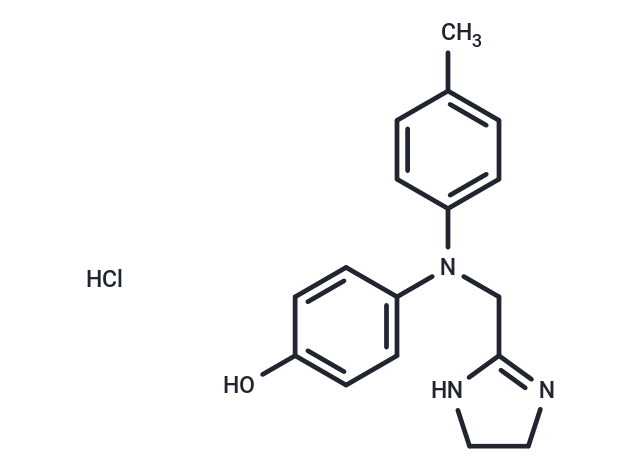Shopping Cart
- Remove All
 Your shopping cart is currently empty
Your shopping cart is currently empty

LUN42518 HCl is an analogue of phentolamine. Phentolamine is a nonselective alpha-adrenergic antagonist.

| Pack Size | Price | Availability | Quantity |
|---|---|---|---|
| 1 mg | $80 | In Stock | |
| 5 mg | $181 | In Stock | |
| 10 mg | $272 | In Stock | |
| 25 mg | $448 | In Stock | |
| 50 mg | $630 | In Stock | |
| 100 mg | $852 | In Stock | |
| 200 mg | $1,130 | In Stock | |
| 1 mL x 10 mM (in DMSO) | $179 | In Stock |
| Description | LUN42518 HCl is an analogue of phentolamine. Phentolamine is a nonselective alpha-adrenergic antagonist. |
| Molecular Weight | 317.81 |
| Formula | C17H20ClN3O |
| Smiles | Cl.Cc1ccc(cc1)N(CC1=NCCN1)c1ccc(O)cc1 |
| Relative Density. | no data available |
| Storage | Powder: -20°C for 3 years | In solvent: -80°C for 1 year | Shipping with blue ice. | ||||||||||||||||||||||||||||||
| Solubility Information | DMSO: 22.5 mg/mL (70.8 mM) | ||||||||||||||||||||||||||||||
Solution Preparation Table | |||||||||||||||||||||||||||||||
DMSO
| |||||||||||||||||||||||||||||||

Copyright © 2015-2024 TargetMol Chemicals Inc. All Rights Reserved.